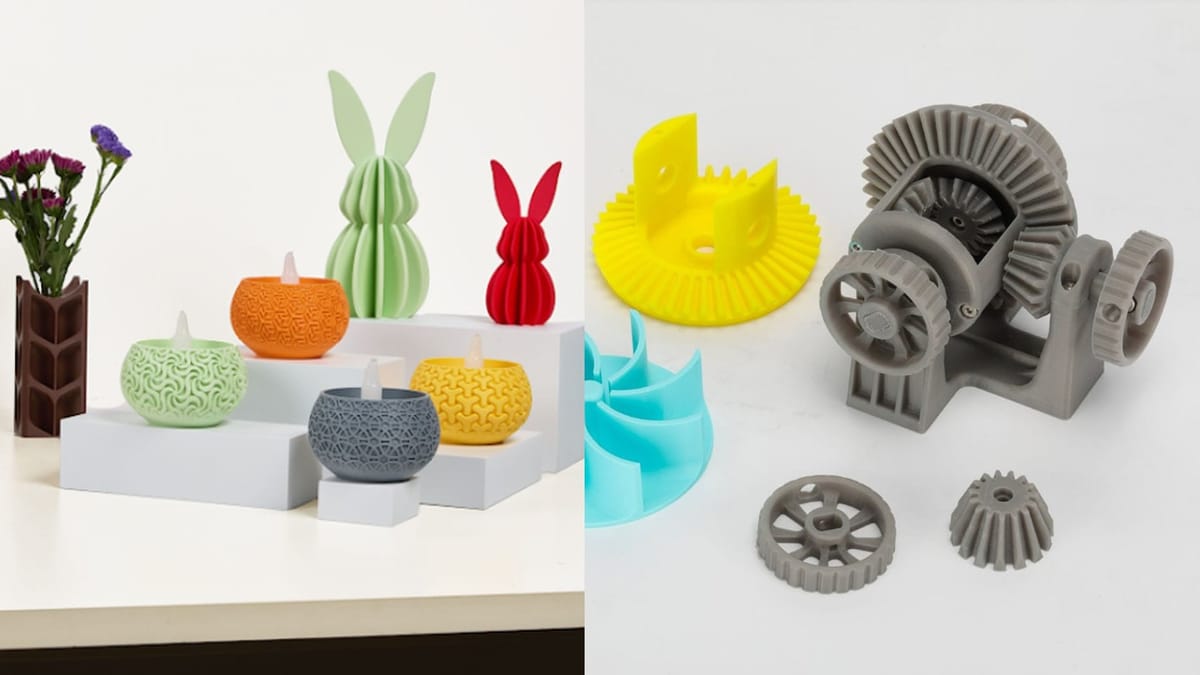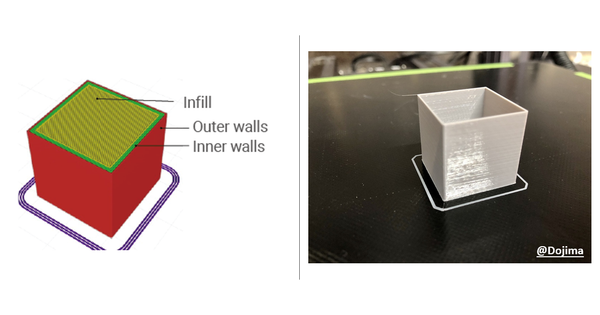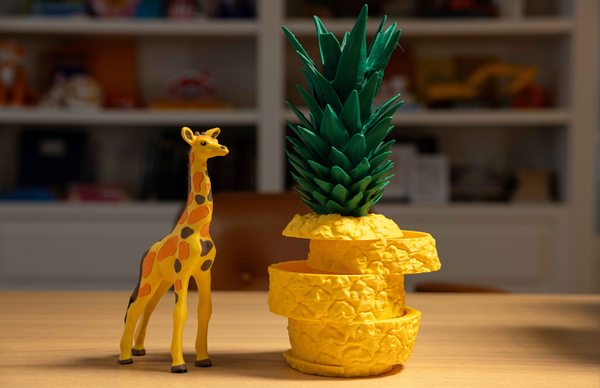PLA Matte vs. Basic: Guide to Selecting Your Perfect Finish

You've got your design ready, your printer dialed in, and you're staring at two spools of filament. One glossy, one matte. Both PLA. Which one do you grab?
This isn't just about personal preference—it's about understanding what each material brings to the table. Basic PLA has been the backbone of 3D printing for years, delivering reliable prints with that familiar semi-gloss finish. Matte PLA is the newer player, promising to hide those pesky layer lines while giving your prints a sophisticated, professional look.
Here's the thing: each filament has its own personality. Basic PLA is your dependable workhorse, ready to handle functional parts and structural components. Matte PLA is your aesthetic specialist, designed to make display pieces look absolutely stunning right off the build plate.
Let's break down exactly what makes these materials tick, so you can make the right choice for your next print.
At a Glance: Basic PLA vs. Matte PLA
Here's a rapid breakdown of the typical properties you'll encounter with these two essential filament options, using specific technical data for reference.

Note: Data sourced from Snapmaker Materials Library. Test methods vary, so compare with caution.
Should a 3D Print Be Glossy or Matte?
This represents a core question of design purpose. It's not about determining which finish is superior, but rather which suits the message your creation needs to convey.
The Appeal of a Traditional Finish:
Basic PLA's smooth, semi-glossy surface has become the reliable finish for countless prints. This traditional appearance makes colors look rich and can emphasize the precise geometric features of a model. It's the preferred option when you need a print that projects strength and functionality.
The Appeal of a Perfect Surface:

Matte PLA's appeal comes from its elegant, non-reflective finish. This characteristic results from adding particulate materials—like finely powdered minerals such as talc, silica, or other specialized compounds—into the base PLA material. These particles generate a micro-textured surface that expertly scatters, or disperses, light. This produces not only the distinctive matte appearance but also creates a distinctive tactile experience, commonly described as having a "smoother" feel compared to basic PLA's slick surface.
A Deeper Look: The Science Behind the Filament
Let's examine the key differences that will affect your final outcomes.
Visual Appeal and Color Characteristics
Matte PLA's light-scattering surface represents its strongest advantage. It performs exceptionally well at concealing the subtle layer lines typical in FDM printing, producing a more consistent and polished appearance.
An important suggestion for optimizing this benefit is to think about color selection. Deeper matte colors work particularly well for hiding small surface flaws. For example, Snapmaker's Matter PLA colors—Carbon Black (000000), Pine Green (519F61), and other saturated tones—are specifically formulated to maximize this effect. The pairing of light absorption from these darker pigments and light dispersion from the matte surface can create an impressively rich, professional result that rivals injection-molded parts.
Strength and Longevity: Pure Polymer vs. Filled Material
The compromise for achieving a flawless finish typically involves reduced mechanical strength.
The Internal Science: Comparing Two Materials
Basic PLA functions as a "pure polymer." Its strength derives from long, interconnected chains of Polylactic Acid. Matte PLA, conversely, represents a polymer composite. Adding mineral fillers changes the material's properties. These microscopic particles, while producing the matte surface, can also interrupt the polymer chains and create stress concentration areas. This means that when loaded, cracks can develop at these microscopic points and spread, frequently resulting in a material that's more fragile and has reduced overall strength.
This becomes evident in technical specifications. A premium standard filament, like Snapmaker's Basic PLA, typically shows strong mechanical characteristics with a tensile strength of 46.6 MPa. By comparison, their Matte PLA—designed for its surface quality—displays a tensile strength of 33 MPa. This information illustrates the fundamental choice: for components that need to handle stress, basic PLA remains the better choice.
Printing Characteristics and Consistency
Although both use PLA as their base, their printing behavior can vary considerably.
Temperature and Extrusion: Matte PLA might need a somewhat higher nozzle temperature. The additives can raise the filament's melt viscosity (flow resistance), so additional heat helps ensure smooth extrusion and proper layer adhesion.
Nozzle Degradation: This represents an important factor. When the fillers in matte PLA are abrasive, they can function like fine abrasive on a standard brass nozzle's interior. Eventually, this can enlarge the nozzle opening, causing under-extrusion and detail loss. For frequent use of filled filaments, a hardened steel or other durable nozzle represents a smart, preventive measure.
Filament Performance: The additives can occasionally create more challenging printing issues. In enclosed, high-temperature printers, certain matte filaments can soften before reaching the melt zone, causing them to compress or get damaged by the extruder gears. This emphasizes the need for effective hot end cooling when working with these composite materials.
Environmental Impact Considerations
Although PLA is recognized for its biodegradable properties, the "environmentally friendly" designation becomes more complex with matte PLA. The PLA polymer component will break down under industrial composting conditions. Nevertheless, the mineral-based additives (such as silica or talc) that produce the matte finish are inorganic and won't biodegrade, remaining in the environment. This represents an important factor for a thorough environmental impact assessment of the material.
Application Showcase: Selecting the Appropriate Material for Your Needs
When Basic PLA Works Best:
Consider basic PLA as the reliable all-purpose option, particularly when its superior strength characteristics are essential.
- Working Prototypes & Mechanical Components: Its excellent tensile and flexural strength make it perfect for parts that will experience stress.
- Fixtures, Jigs, and Custom Tools: Build durable, specialized tools for workshop applications.
When Matte PLA Excels:
Matte PLA performs best when visual excellence is essential, delivering a premium finish straight from the printer.
- Showcase Models & Collectibles: Its layer line concealing ability enhances the fine details of figures and sculptures.
- Architectural Prototypes: Create clean, professional presentations that effectively communicate design concepts.
- Components for Painting: The textured surface offers an ideal foundation for paint, frequently needing less primer preparation.
Expert Tips for Printing Success
Begin with Established Settings: Always start with manufacturer-suggested or proven slicer profiles for your particular filament to ensure optimal flow and temperature parameters.
Maintain Dry Filament: The additives in matte filaments can increase their moisture absorption tendency. Damp filament commonly causes poor print results. Store rolls in sealed containers with moisture absorbers or use a filament dryer for optimal results.

Use Care During Finishing: Since matte PLA tends to be more brittle, additional caution is required. When removing supports, use precision cutters to carefully trim them rather than attempting to break them off, which might crack or separate the part itself.
Take Advantage of the Surface for Finishing: Matte PLA's micro-texture not only conceals layer lines effectively but also aids in finishing work. It's typically easier to sand than glossy PLA, and its surface offers excellent "grip" for paint adhesion, producing a more lasting painted result.
Final Recommendation
So, does Matte PLA outperform Basic PLA? The answer is neither; they represent different tools for different creative objectives, each with its distinct technical characteristics.
Select Basic PLA when your project requires maximum strength, durability, and functional reliability.
Select Matte PLA when your main objective is outstanding visual quality, a perfect surface for display, or an excellent foundation for painting.
The choice represents a typical engineering balance: appearance versus performance. By understanding the technical reasons behind these filaments' different behaviors—from their composite structure to their light interaction—you can establish appropriate expectations and ensure your finished print succeeds in exactly the right way.




